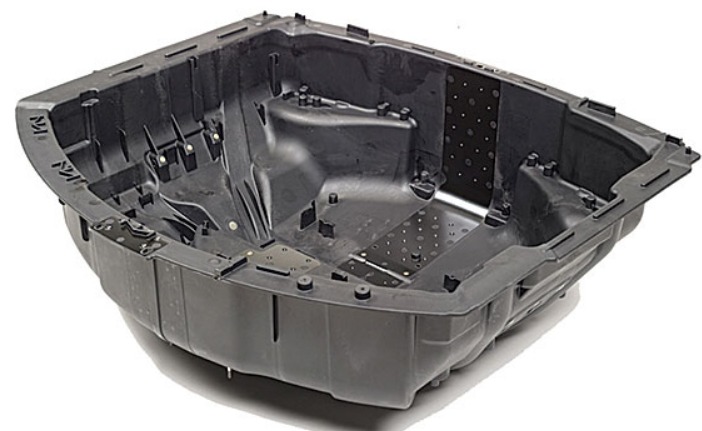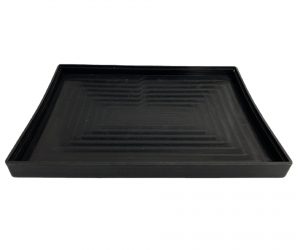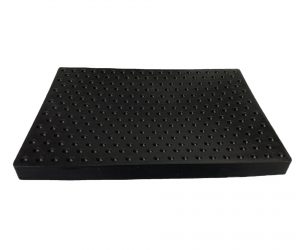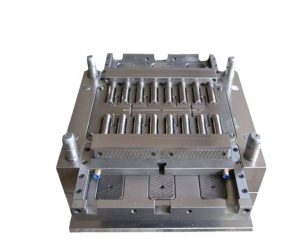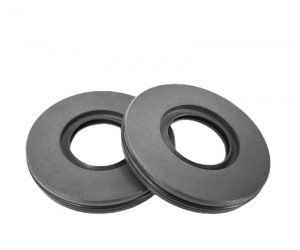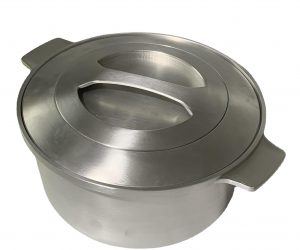The landscape of precision CNC machining is evolving at a rapid pace, driven by groundbreaking technological advancements. This article explores the key trends and innovations that are expected to propel the future growth of the CNC machining industry, particularly for precision CNC machining suppliers, and examines the transformations they will need to undergo to remain competitive.
Technological Advancements: Paving the Way for Precision CNC Machining
As science and technology continue to advance, the CNC machining sector is undergoing significant changes. The introduction of novel technologies is reshaping traditional machining methods, offering both unprecedented opportunities and complex challenges for the industry. In a competitive marketplace, precision CNC machining suppliers must adapt quickly, embracing innovation to meet shifting market demands.
1. Digital Technology: The Future of CNC Processing
One of the most significant trends in CNC machining is the increasing integration of digital technologies. By merging traditional machining techniques with digital solutions, suppliers can achieve greater efficiency, precision, and flexibility. Tools like computer-aided design (CAD) and computer-aided manufacturing (CAM) systems allow for a seamless transition from design to production, enhancing both product quality and production efficiency. For example, CAD software helps streamline the design process, while CAM optimizes machine control, reducing errors and boosting output.
2. Intelligent Manufacturing: The Role of Automation and AI
Intelligent manufacturing, which integrates Internet of Things (IoT), big data, and artificial intelligence (AI), is emerging as a transformative force in the CNC machining industry. These technologies enable automation and real-time optimization of production processes, improving efficiency and product quality. IoT sensors, for instance, provide continuous monitoring of machine performance, while AI algorithms analyze production data to detect patterns and predict potential issues, allowing for proactive maintenance and adjustments.
Smart manufacturing systems can also facilitate remote monitoring, reducing downtime and maintenance costs by enabling real-time diagnostics and alerts. As these technologies evolve, they promise to significantly enhance operational efficiency and cut costs for CNC machining suppliers.
3. New Materials: Advancements in CNC Machining Applications
The continued development of advanced materials will further impact CNC machining. As industries like aerospace, automotive, and medical devices demand materials that are stronger, lighter, and more heat-resistant, CNC machining suppliers must continuously adapt. New materials such as composites, titanium alloys, and ceramics require specialized machining techniques and tools. CNC suppliers need to stay informed about these material innovations and adjust their processes accordingly to meet the growing complexity and diversity of material requirements.
4. Sustainability: Reducing Environmental Impact
Sustainability is becoming a key focus for the CNC machining industry. As environmental concerns continue to grow, manufacturers are under increasing pressure to minimize waste and reduce energy consumption. CNC machining suppliers are adopting green manufacturing practices that use energy-efficient equipment, renewable energy sources, and eco-friendly materials like recycled metals and biodegradable plastics.
For instance, some CNC machining facilities are powered by solar panels or wind turbines, significantly reducing their reliance on fossil fuels. Others are using additive manufacturing techniques, which generate less waste compared to traditional subtractive methods. These steps align with the industry's broader move toward sustainable practices that not only meet regulatory requirements but also appeal to environmentally conscious consumers.
5. The Rise of Automation and Robotics in CNC Machining
One of the most transformative trends in the CNC machining industry is the increased adoption of automation and robotics. These technologies provide numerous benefits, including enhanced efficiency, accuracy, and cost-effectiveness. Machines and robots now collaborate seamlessly, performing repetitive tasks such as loading and unloading materials, while humans supervise and intervene as necessary.
Collaborative robots (cobots) are designed to work safely alongside human operators, automating tasks without compromising safety. Automated material handling systems, which use robotic arms and conveyors, are also becoming more widespread, streamlining production and ensuring consistent handling of materials throughout the machining process.
Real-World Applications
Many CNC machining suppliers have already incorporated these technologies with great success. For example, some companies now use robot-assisted welding cells, significantly speeding up production while maintaining high-quality standards. Additionally, automated material handling systems help eliminate errors caused by human fatigue during tasks such as assembly and inspection.
Challenges and Considerations
Despite the benefits, automation does pose certain challenges. Machine programming can be complex, requiring precise calibration to ensure tasks are performed accurately. Furthermore, workers must receive specialized training to operate these systems effectively, ensuring they understand the machines’ functions and potential risks.
6. Advances in 5-Axis and Multi-Tasking Machining
The development of 5-axis and multi-tasking machining technology is revolutionizing the precision CNC machining industry. These advanced machines allow for multi-dimensional operations, enabling manufacturers to create complex parts more efficiently and accurately than traditional 3-axis machines.
Benefits of 5-Axis and Multi-Tasking Technology
One of the main advantages of 5-axis machining is its ability to perform all necessary cuts in a single setup. This reduces setup times, minimizes errors, and improves the quality of complex parts. The additional axes provide more flexibility for intricate designs, offering new possibilities for aerospace, automotive, and medical device manufacturers.
Multi-tasking machines combine both milling and turning functions, allowing manufacturers to produce high-precision components in fewer operations, further optimizing production efficiency and reducing lead times.
Real-World Examples
Companies in aerospace and medical industries are already reaping the benefits of 5-axis and multi-tasking technology. For example, turbine blades and medical implants with complex geometries are now being produced more rapidly and accurately, contributing to better patient outcomes and enhanced component performance.
Challenges and Costs
The primary challenge with 5-axis and multi-tasking machines is their high cost. Additionally, operators need advanced training to effectively use these machines, which can have a steep learning curve. However, as technology continues to improve, these systems will become more affordable and easier to operate.
7. Integration of IoT and Data Analytics
The integration of IoT and data analytics into CNC machining is reshaping how manufacturers optimize their operations. By embedding sensors into machines, manufacturers can collect real-time data on parameters like temperature, vibration, and power consumption. This data is analyzed using machine learning models to identify patterns and predict machine failures, helping operators take preventive measures and improve maintenance schedules.
Predictive Maintenance and Enhanced Efficiency
Predictive maintenance, driven by data analytics, is another key advantage of IoT-enabled machining. By analyzing historical data, manufacturers can predict when a machine will require maintenance, preventing unexpected downtime and reducing operational costs. This capability is particularly valuable in high-precision environments where uptime is critical.
Challenges of IoT Integration
Although IoT and data analytics offer significant advantages, they also introduce challenges, particularly around cybersecurity and interoperability. As more devices become interconnected, ensuring the security of sensitive data and ensuring smooth communication across different systems is essential.
8. Expansion of Additive Manufacturing and Hybrid Processes
Additive manufacturing (3D printing) and hybrid machining processes are gaining ground in the CNC machining industry. These technologies complement traditional machining by allowing manufacturers to create complex, customized parts with minimal waste.
Hybrid machining combines both additive and subtractive processes in a single machine, allowing manufacturers to perform multiple operations, such as laser cladding followed by milling, without needing to reposition the part.
Key Benefits
The key benefits of additive manufacturing include reduced material waste and the ability to create intricate geometries that are difficult or impossible to achieve with traditional methods. As the technology matures, hybrid processes will likely become more commonplace in industries like aerospace and medical device manufacturing.
Conclusion: Embracing the Future of CNC Machining
The future of precision CNC machining is full of exciting possibilities, driven by innovations in automation, artificial intelligence, additive manufacturing, and data analytics. For suppliers in this space, staying ahead of technological advancements will be crucial to maintaining competitiveness. By embracing these trends—whether through investing in intelligent manufacturing, advanced materials, or sustainable practices—CNC machining suppliers can position themselves for long-term success in an increasingly complex and demanding market.
The road ahead may present challenges, but with the right combination of innovation, expertise, and adaptability, precision CNC machining can continue to thrive, delivering high-quality, cost-effective solutions for industries worldwide.
